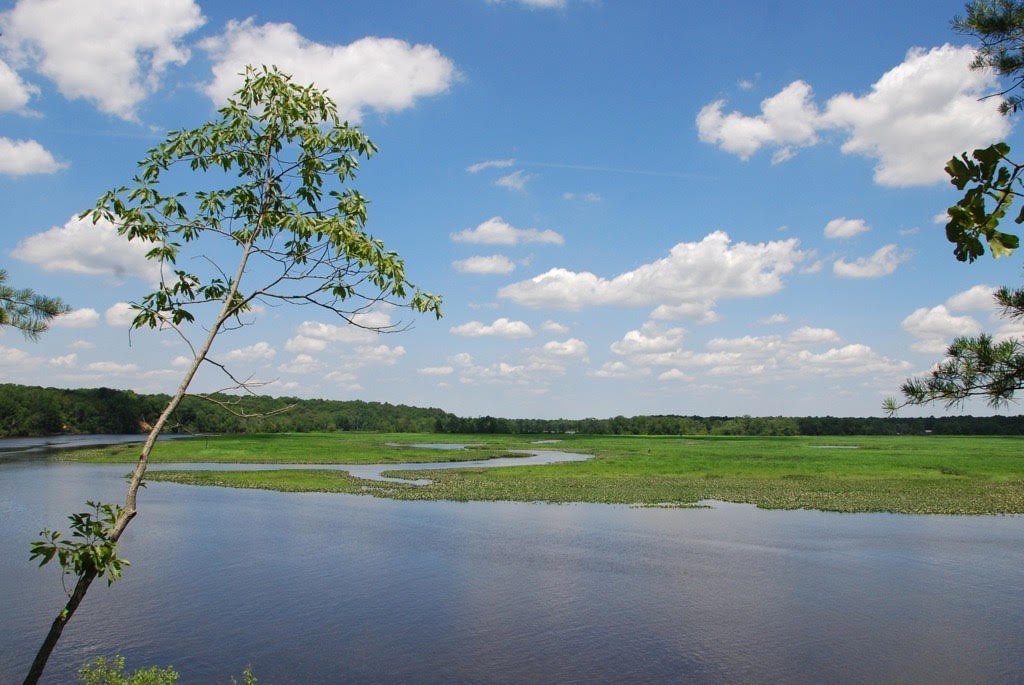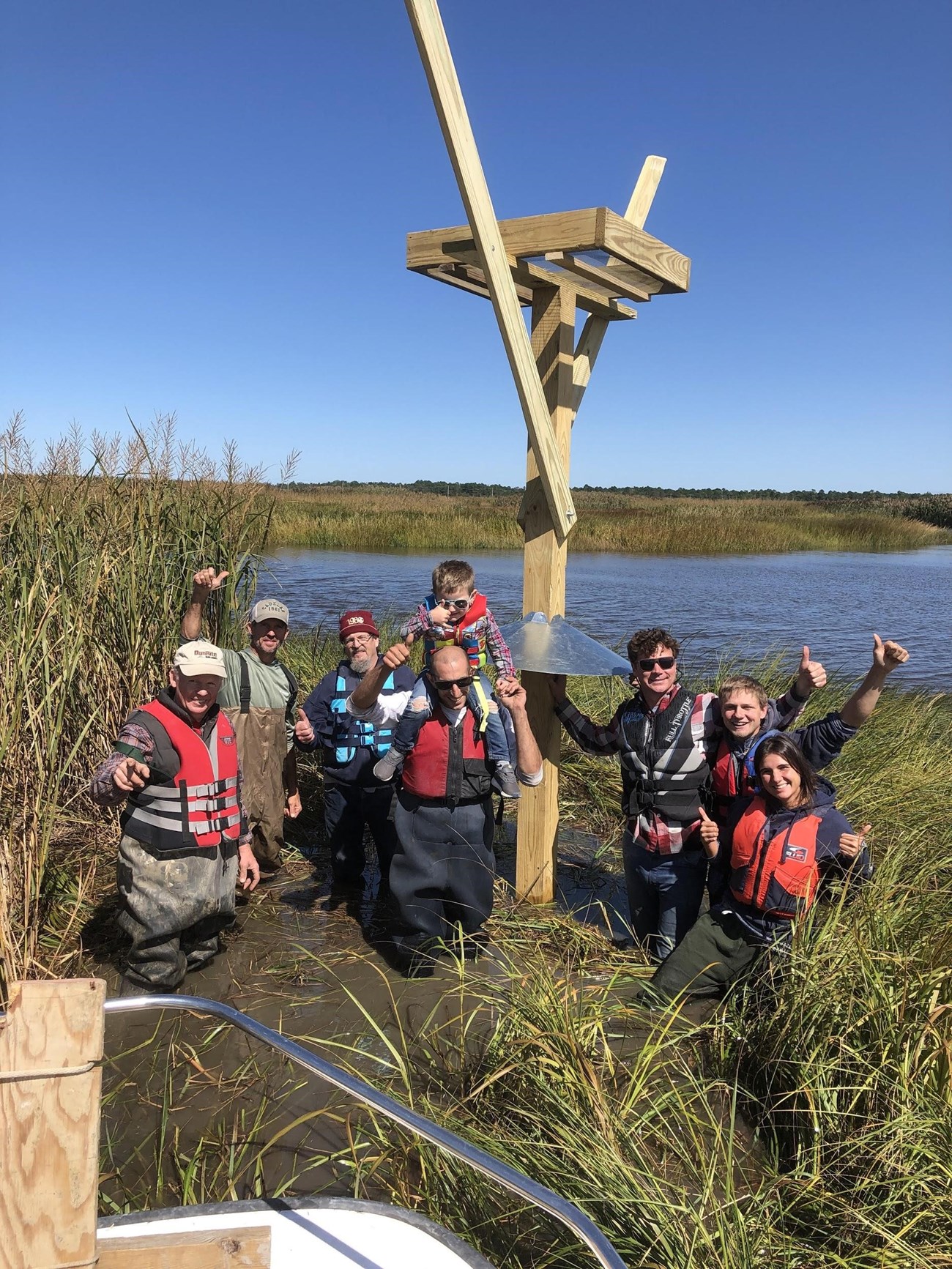Last updated: December 17, 2020
Article
Maurice Wild and Scenic River, NJ- Snapshot of the Maurice Designation
Designated December 1, 1993
|
Name |
State |
Date Study was Enacted |
Public Law |
Congressional Sponsors |
Date Designated |
Public Law |
How was the river designated |
|
Maurice River |
NJ |
May 7 1987 |
William John Hughes (D-NJ) |
December 1 1993 |
The Secretary of the Interior shall manage the river segments designated as components of the National Wild and Scenic Rivers System by this Act through cooperative agreements with the political jurisdictions within which such segments pass, pursuant to section lO(e) of the Wild and Scenic Rivers Act, and in consultation with such jurisdictions, except that publicly-owned lands within the boundaries of such segments shall continue to be managed by the agency having jurisdiction over such lands. |
|
Miles Designated |
Congressional Sponsors |
Designated ORVs |
Website |
Outstanding Resources |
|
35.4 |
William John Hughes (D-NJ) |
Cultural, Fish, Recreation, Wildlife, Ecologic, Water Quality |
Part of the Atlantic Flyway, pristine habitats that support endangered species and are vital for the migration of birds, waterfowl, rails, and fish |
Maurice Wild and Scenic River Designation - A Silver Lining
By J. Morton Galetto, CU Maurice River
The Maurice River (pronounced “Morris”) draws from a drainage area of 385 square miles and meanders south for 50 miles, through Southern New Jersey primarily in Cumberland County. Headwaters are in parts of Gloucester, Salem, and Atlantic Counties, emptying into the main stem of the Maurice; from there it flows into Delaware Bay. The major tributaries of the river are Scotland Run, Muddy Run, Menantico Creek, Muskee Creek, and the Manumuskin River. There are about 20 small lakes in the watershed, the largest of which is Union Lake at 950 acres. We are in a coastal plain so none of our lakes are natural, but rather remnant ponds from mills dating back to colonial times.
The Maurice River and three of its tributaries were designated as Wild and Scenic Rivers by the US Congress and President Clinton on December 1, 1993, after a study process that began in 1986. Included tributaries are the Manumuskin, Menantico, and Muskee Rivers. In all, 35.4 miles are designated as “scenic” or “recreational.”
The southwestern portion of the Pinelands National Reserve drains into the Maurice River via the Manumuskin River. The latter is one of only two rivers designated as pristine in the Reserve. The Pinelands Comprehensive Management Plan considers the entire Manumuskin watershed to be an ecologically critical area within the Kirkwood-Cohansey aquifer; therefore even though there is a dam on the Manumuskin, which creates Cumberland Pond, it was decided to include its entire length in the Wild and Scenic classification because of its unspoiled nature.
Outstanding natural and cultural resource values are critical to defining such waterways. Continuing since thousands of years before European settlers, Native Americans use the resources of the river. The river’s name is thought to be derived from the Prince Maurice, a 17th century Dutch ship reputed to have sunk in its waters. Cultural resources connect past and present in maritime uses and existing maritime villages. Extensive maritime, shellfish, agricultural, and sand enterprises typify the region. The sands supported a thriving glass industry.
Today, scientific glass is still an important industrial component of the local economy. From the 1700s until the 1940s, diked farms lined the banks of the tidal Maurice. Today only one remains, the historic Burcham Farm. While agriculture is still an essential cultural activity throughout the watershed, forest, wetlands, and water make up the majority of the land cover.
Some of the outstanding natural resource values include the Atlantic Flyway, pristine habitats that sustain rare species, and crucial food and resting areas for migratory birds, waterfowl, and fish. CU Maurice River has a number of recovery projects in which their members play a major role. They maintain over 40 osprey platforms and have constructed more than 150 for use throughout NJ. In fact, when CU started its program in 1986 only six or fewer chicks were produced on the river. Today production is in the 90s or greater. Purple martin landlords also provide housing for over 8,000 chicks annually. And bluebird trails contribute over 1,000 young each year. The State’s eagle program has taken off since the beginning of the Wild and Scenic Study, when only one lone nest was extant in the region. Today about 20 nests can be found within the watershed and another 30 nests occur within a 15-mile radius. Introductory programs, discontinuance of DDT, and quality habitat are responsible for this success story.
The Maurice River is also the second largest tributary of the Delaware Bayshore, an ecosystem of national and international importance. The Delaware Bay wetlands were designated under the RAMSAR Convention on Wetlands in a treaty signed in 1971 intended to protect exceptional wetlands complexes.
The Wild and Scenic process began in 1986, after the New Jersey Hazardous Waste Siting Commission was intending to place a disposal site between three of the not-yet-designated rivers. One criterion that would remove a location from consideration was a Wild and Scenic River designation. It was rather easy to get the five communities involved in launching the Wild and Scenic study process, but sustaining a political willingness to stay on board proved far more difficult. The local environmental organizations and local officials began the process of demonstrating that the site was inappropriate for the facility because of its pristine nature. Environmental consultants studied the area and found that a plethora of threatened and endangered species, both plant and animal, made the site their home. A year later the state agreed with our organization and local officials that the location was too environmentally sensitive to become a disposal site, being identical to the Pinelands Preserve that bordered the area.
Political forces checked this off as a win and many local officials were no longer as interested in the study process. Luckily, the County Planning Department and some of the municipal planners saw the wisdom of continuing the Wild and Scenic Study effort. Our organization, CU Maurice River, remained steadfast, contributing to and cheering the process along.
On the cusp of designation and even afterward, some municipalities did not intend to draft management plans. Our organization maintained an advocacy campaign and eventually, in 1993 after President Clinton signed the proclamation designating us as a Partnership Wild and Scenic River, all the local communities developed conservation land use plans, adopting Memoranda of Understanding (MOU) between the Department of the Interior and communities in the designated area – Millville, Vineland, Buena, Maurice River and Commercial Townships. This was not a linear progression and at times it seemed doomed to fail.
During the study process an interesting conservation momentum began to build. CU Maurice River was a catalyst for encouraging organizations to take a more serious look at the preservation possibilities. Land trust groups were diligent. They conducted a lot of research, performed environmental inventories, and prioritized properties for preservation. By the early 90s, New Jersey Green Acres/ Fish and Wildlife designated the Maurice and Salem Rivers as priority purchase areas for federal land and water conservation dollars. The Nature Conservancy, Natural Lands, and New Jersey Conservation Foundation all began studies of how to cobble together properties to create buffers and contiguous large tracks of protected land. The sand industry to some extent played an unexpected and unintended conservation role, in that they maintained large tracts of contiguous land that had not been developed. And some of the building slumps of the 90s and wetland laws made properties available for purchase.
In this author’s opinion the Wild and Scenic naysayers seemed focused on the struggle with the Wild and Scenic process and had not paid attention to the amount of land that was being conserved. They were also distracted by some of the land battles, where we were lobbying against industrial projects like a barge port on the Maurice as well as massive housing schemes.

CU objected to development proposals and advocated for protection. Land trusts and the State added tens of thousands of acres to wildlife management areas, state forests, and preserves, such that today the river has an amazing greenway buffer. One of the Nature Conservancy’s flagship conservation achievements is the 535-acre Bluff Preserve along the Maurice. They have declared the region one of their international “Last Great Places on Earth.” Their Manumuskin Preserve’s 3,500 acres is in the process of being connected to the State’s Wildlife Management Areas (WMA). And a long-embattled 1,350 acres belonging to a developer, adjacent to protected land, was finally bought by the State Green Acres program in the beginning of 2020.
The Peek Preserve’s 344 acres was one of the first properties purchased in close connection with the study process. Along the Menantico at least 1,700 acres were added adjacent to Menantico Ponds WMA. The New Jersey Conservation Foundation wrote “Charting a Course for the Delaware Bay Watershed” and envisioned its future. NJCF has been purchasing properties that are important connections for wildlife between previously noncontiguous areas, especially in the Menantico, and they wrote an inventory and Conservation Plan for the Manumuskin’s resource values. Our organization fought to protect 470 acres of land along the upper Maurice, once owned by Dupont and then the City of Vineland. The Nature Conservancy and Vineland eventually settled on its preservation. The Willow Grove Lake Preserve now exceeds 660 acres and connects to WMAs along much of the length of the river, such as the Peaslee WMA, Belleplain State Forest, and Menantico Ponds WMA. We are indebted to the three land trusts and to New Jersey’s Green Acres program / NJ Fish and Wildlife for their foresight and tenacity.
NJ’s Fish and Game Endangered and Nongame Species Wildlife Action Plan has described the region as having “the highest concentration of rare and endangered wildlife in NJ, accompanied by the lowest density of urban development in the state. The Delaware Bay Landscape is a region of global importance and offers considerable opportunities for conservation.” The large contiguous blocks of forest are what support so many rare and sensitive species of wildlife; in fact over 53% of NJ’s listed species can be found in the Maurice River drainage basin.

All of this is no accident. It is the author’s belief that when we started the Wild and Scenic River process, land trusts began to pay closer attention to our region and learn about the treasures it contains. They already had a focus here, but the designation process truly revealed the possibilities. Each of them saw how connections of land to create contiguous habitat were possible both in the watershed and the greater Delaware Basin. Today we still have some more such links to be created, but the focus will now shift toward trying to maintain quality and quantity or to improve habitats that are primarily imperiled by invasive species. Waterflow has diminished due to withdrawals, diversions, and impervious surfaces. Fostering property stewardship and installing water conservation projects has been the aim of many current initiatives carried out by CU and other environmental organizations.
In Down Jersey, one of CU Maurice River’s PBS documentaries, John Teal said, “Development and destruction only has to happen once; conservation has to happen again and again and again.” Those truths seem obvious, but their implementation is our challenge and our charge.
